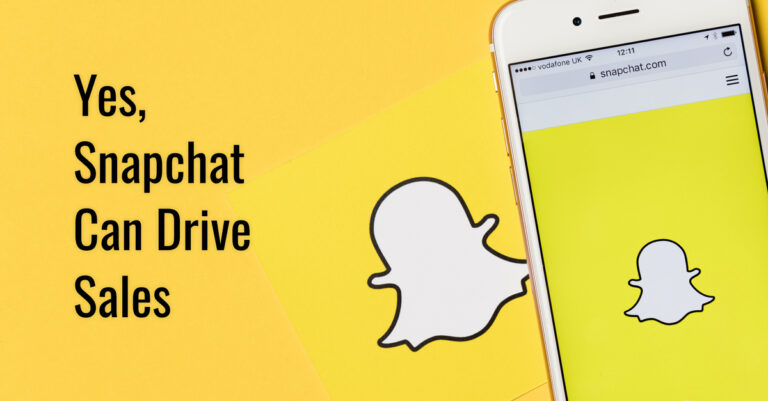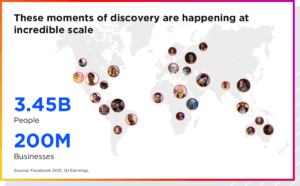

When you launched your eCommerce website, you no doubt envisioned your brand developing a loyal audience. If you’re indeed fortunate enough to have customers who are so happy with your products that they talk about them on social media, forums, review websites and blogs, you have an opportunity that needs to be capitalized on.
User-generated content is defined by SproutSocial as “content created by a brand’s user,” which can be “anything from images to videos to blog posts. The user could be a brand’s customer, site visitor or social follower.” This content is extremely valuable to your business because it’s basically one shopper telling another that your products are worth spending money on.
As we’ve outlined before, engagement on social media builds trust. User-generated content helps brands achieve trust by demonstrating evidence of value through social proof. This helps you increase traffic, engagement and conversions on your eCommerce website. Read on for tactics for how you can do this by utilizing user-generated content.
Feature your customers via social media posts
Posts on channels like Instagram, Facebook and Twitter are the main types of user-generated content that brands can leverage. They could include selfies and other images of customers wearing your products, unboxing videos and review videos. By reposting customer content on your own social media channels and featuring it on your website on a dedicated page, you open your brand up to many more potential customers.
Some brands choose to give their customers a nickname when they repost their audience’s content, for example, Réalisation Par. When they post a photo of a customer wearing their clothing they call them “Dreamgirl.” When it comes to Facebook, try to share users’ posts that have viral potential—videos are great in this instance. And with Twitter, make sure you share images as well as glowing written reviews, as visual content really stands out on the platform.
Start a hashtag campaign
The key to creating a successful hashtag campaign is to be clear and engaging. Make it easy and fun for your audience to participate and they will be much more likely to engage with your hashtag. It can also help to have something that incentivizes and motivates your audience to engage. That’s why hashtag campaigns that also involve a giveaway or some form of competition are so effective. Another thing to keep in mind when creating a hashtag is simplicity. Choose a hashtag that people can spell and read easily on their phone. Too many letters or multiple words in a hashtag will scare off users and cause plenty of posts to go unnoticed due to misspelling. A hashtag such as #LoveYourOutfit may sound great in a marketing meeting, but in execution it could cause problems. How does the hashtag look without capitalization, which many users won’t attempt? #loveyouroutfit will look like a mess of letters when seen in a social media timeline. Where as #LoveYou is much simpler and still applicable. Brevity is the soul of wit, especially when it comes to hashtags.
You can also try a competition where all the customer has to do to enter is post a photo with your chosen hashtag, and where you declare a winner at the end who gets an exclusive item as a prize. Make the terms and conditions clear, including how you will pick the winner (for example, pick at random, or pick the one that achieves the most likes), and a clear end date for the competition. The legalese that’s required for these types of competitions is important to get right and it can be tricky to do so. That’s why we recommend partnering with a firm that has experience in implementing and monitoring digital contests.
Ask customers to answer questions in a Q&A
Set up a question and answer (Q&A) page or section on your website, and ask your customers to answer questions about your products. This is a tactic that has helped Amazon become the eCommerce juggernaut it is today, as Q&As are effectively FAQ for each product. The more questions your page can answer without the shopper actually having to contact your customer service, the more likely they will be to convert. In a study by Aspect Software, 69% of millennials said that they feel good about a company when they’re able to resolve an issue on their own.
You can ask your audience to answer questions via your social media channels, your newsletter, in pop-up ads on your website, and via email after they make a purchase. You could also have pop-up ads on your website that offer a discount in exchange for their feedback.
Encourage customers to share photos in their reviews
Shoppers can be distrustful of models or paid advertising, because nearly everyone has had the experience of ordering products online only to find they don’t live up to expectation. Often, in the case of apparel, it doesn’t fit as expected. But when a customer is able to see a product in a natural environment—in another person’s home, or on someone with a similar body to them—it can make all the difference, and be the tipping point to purchase.
So when you enable product page reviews, be sure to enable—and encourage—photos in reviews. Yotpo is a reliable service that we often use when building customer reviews and Q&A sections for our clients’ websites.
Share blogs that feature your products
Much the same as reposting satisfied customer selfies and review videos, sharing positive reviews and articles by bloggers that feature your products will do wonders for reinforcing your brand. By showing that a person or publication considered you worthy of writing about and that they took the time to share your products on their platform, you will gain even more trust and credibility.
Acknowledging your press and reviews on your website and social media also shows that you’re paying attention to what’s being said about you and that you care about feedback and criticism. Engagement is more important than ever nowadays, so prove that you’re active and open to it.
Get high-profile customers to take over your social media
Social media takeovers can help build trust and engagement, which leads to increased conversion rates. Often they are done with high-profile social media users, or influencers, as a way to grow followings and social clout, but they can also be done by employees as a way to share more behind-the-scenes content. However, if you’re looking to gain traffic and conversions, you’re best to go with someone with a following themselves. Read our recent blog about the rise and power of nano-influencers, which are a more affordable type of social media influencer you could utilize here.
Set a clear framework on what is expected in terms of timing, types of content and the number of posts. Will it be just Instagram Stories or grid posts as well? Or will you stick with Facebook or Twitter, or another platform? Whichever you choose, be sure to communicate clear guidelines on your brand’s do’s and don’ts.
And finally, use a third-party social monitoring platform such as Hootsuite to keep an eye on all of your pages, assets and interactions. This means you won’t have to be manually checking all of your platforms constantly, which will save you time and provide more analytics to make your reporting easier.
Conclusion
Developing an effective social marketing program takes experience, strategy and lots of fine-tuning. At InteractOne we work with our clients to review and improve their social strategies to increase engagement and conversion. If you’d like to learn more about how to utilize user-generated content to grow your audience and sales, please get in touch.
Get in Touch
Connect with one of our experts today to discuss your eCommerce needs!
Contact Us








